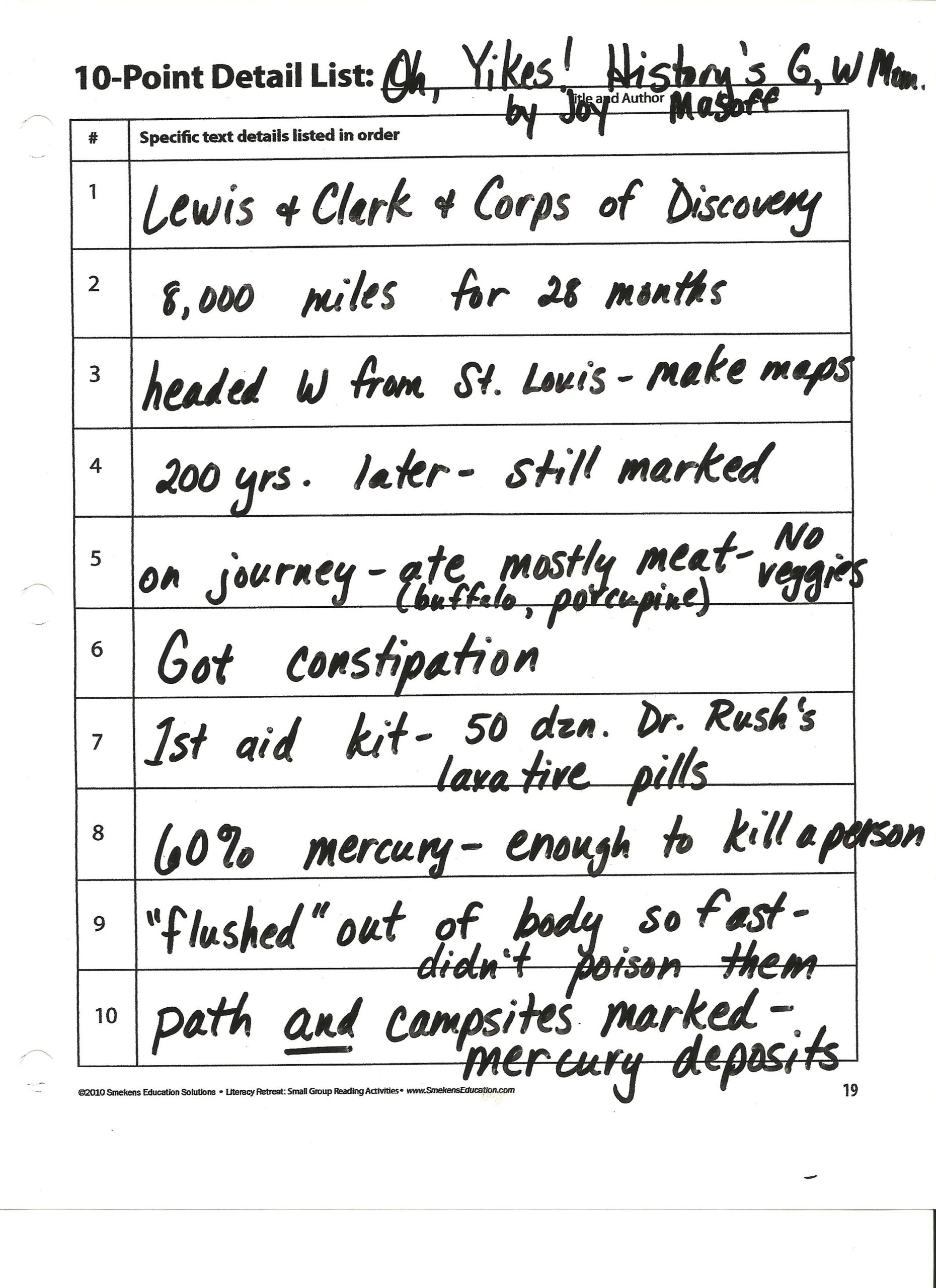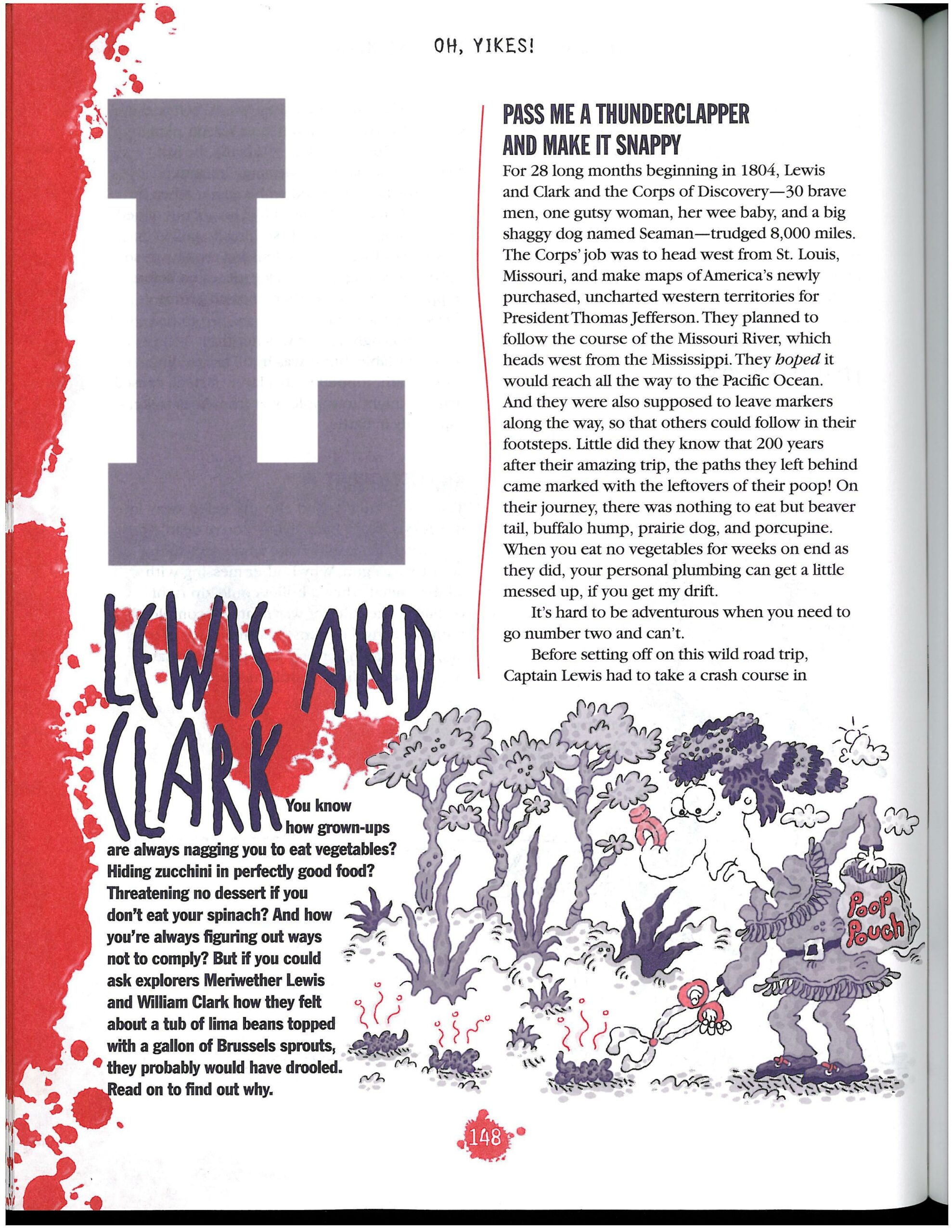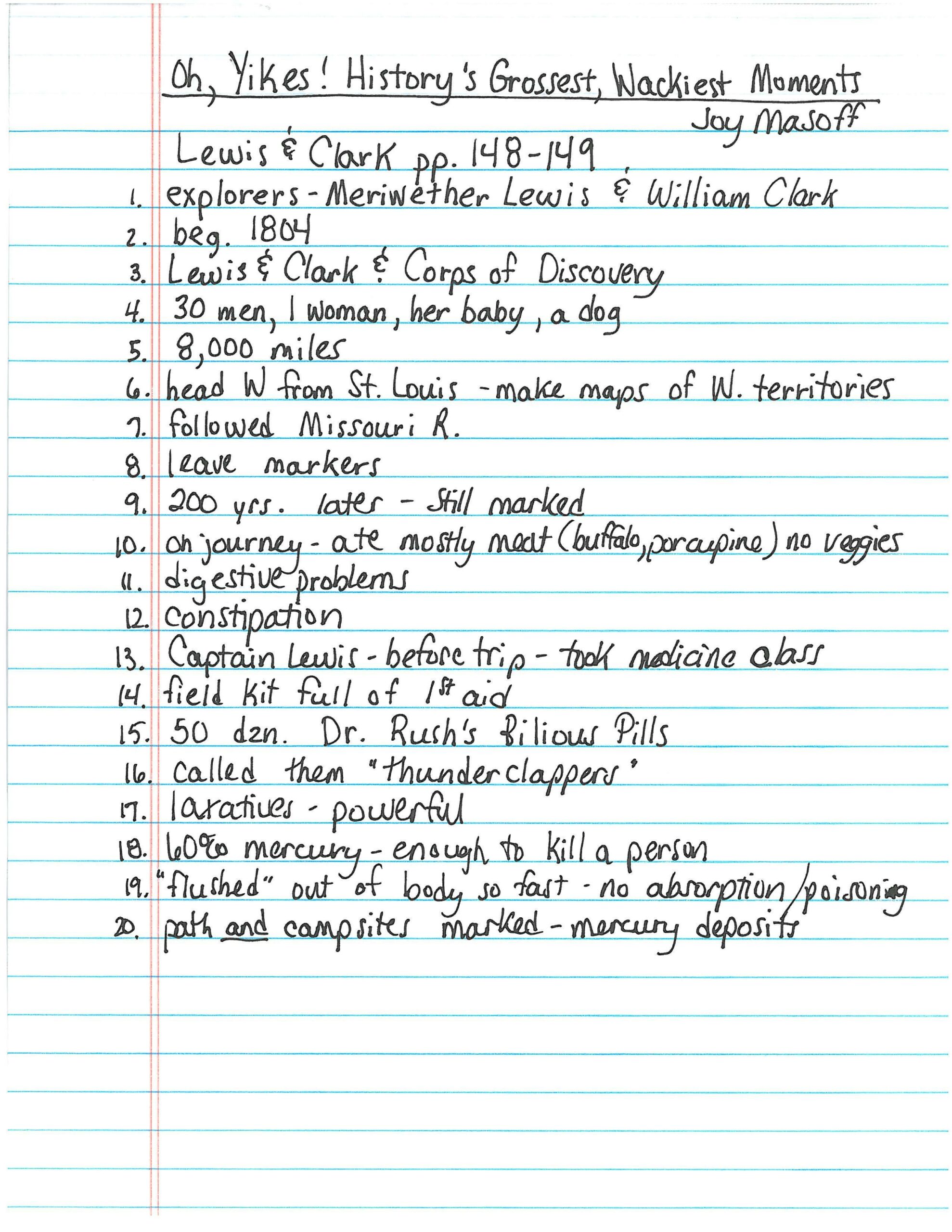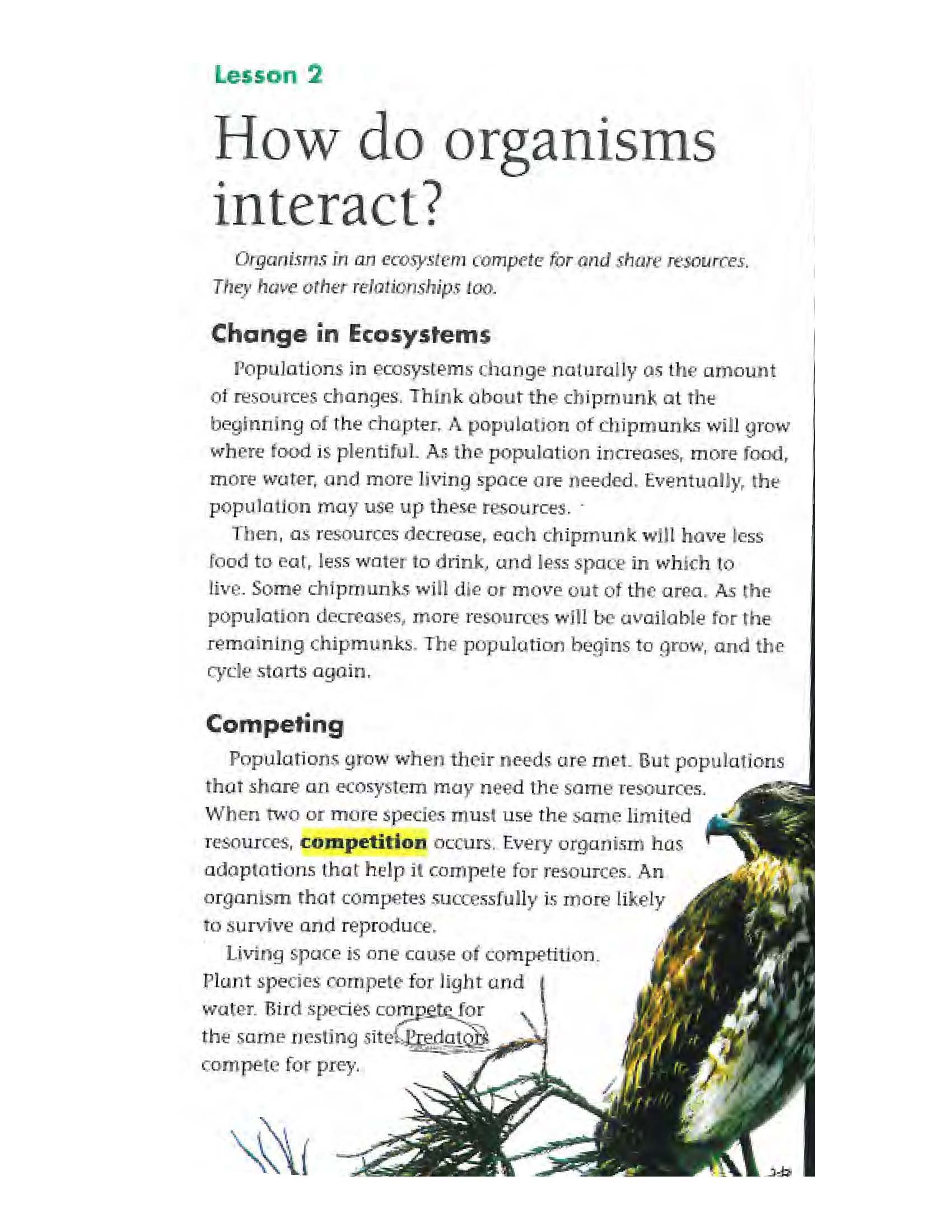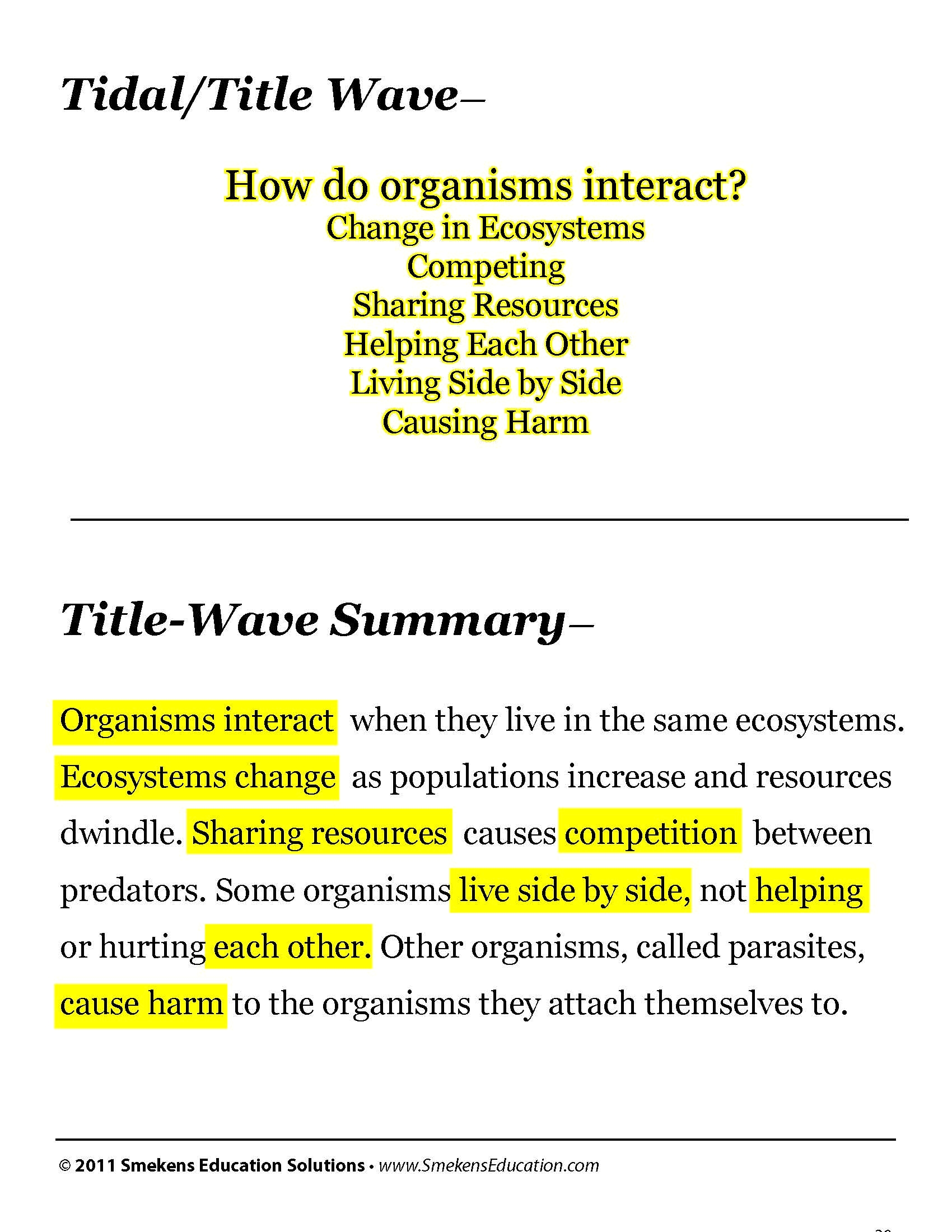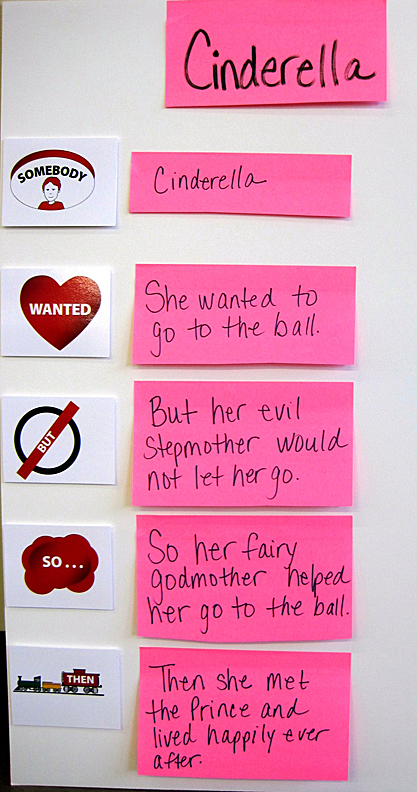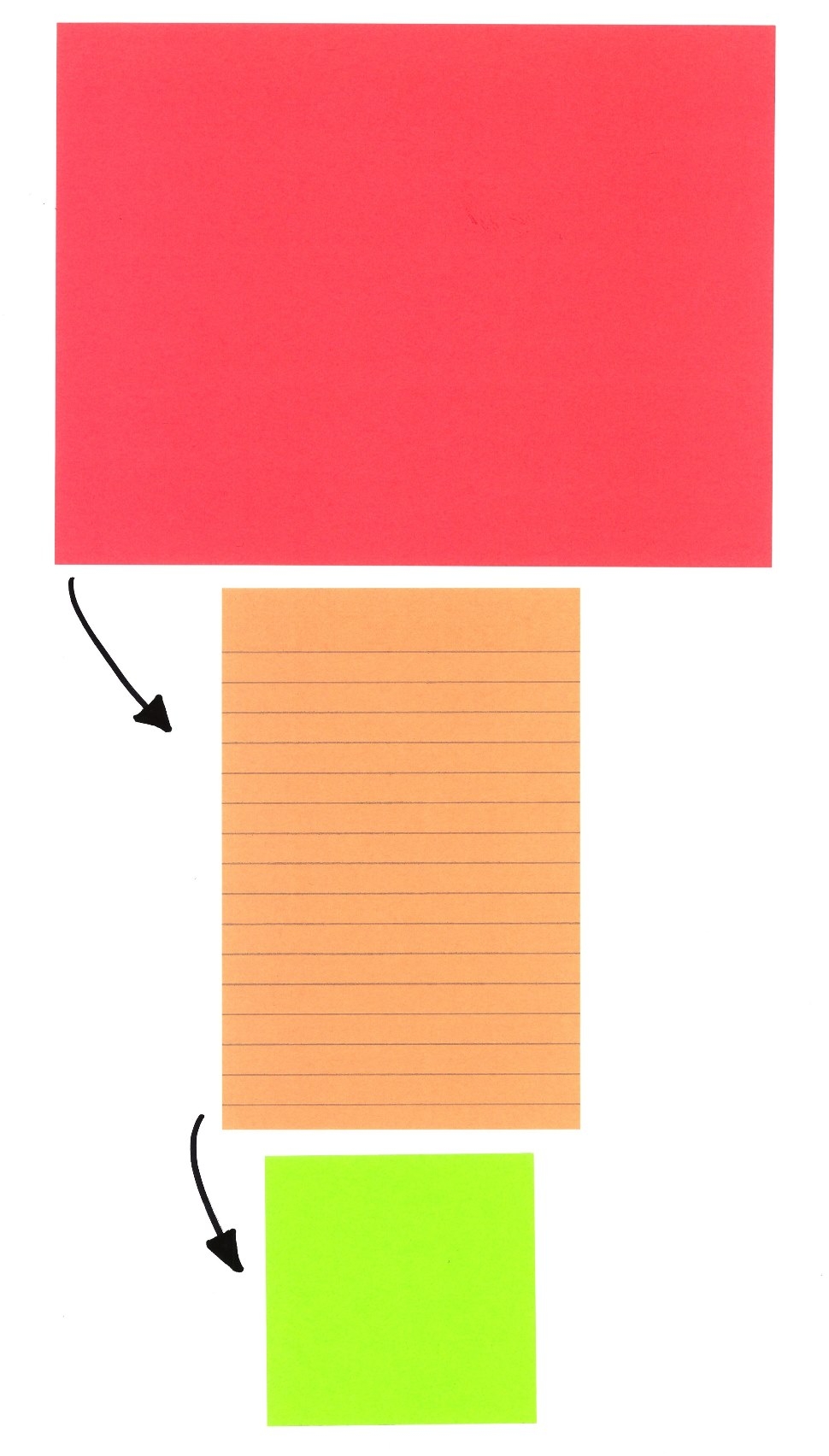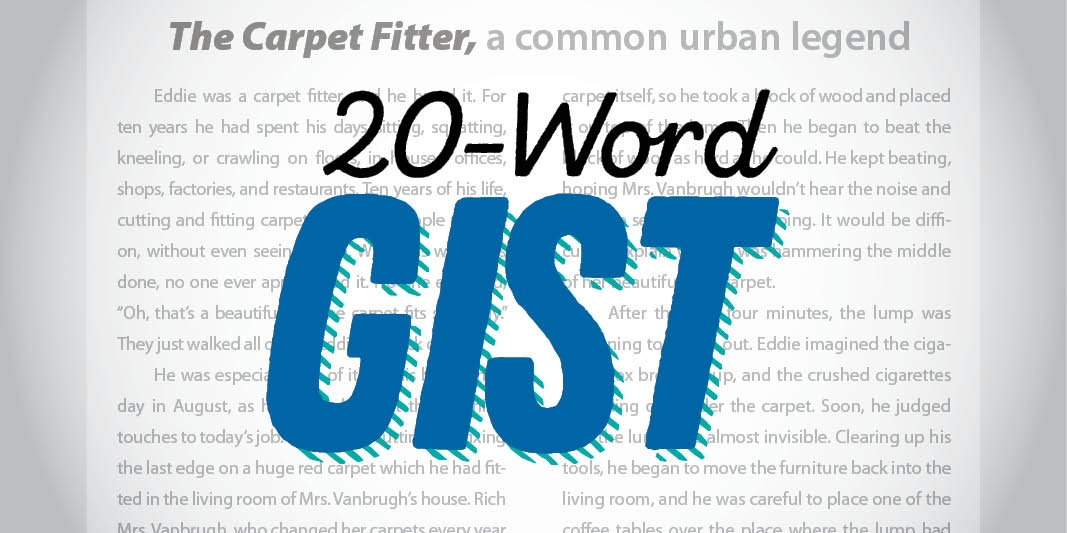Best-of-Smekens Writing Conference:
Writing Remix 2019
SECRET SITE
Writing About Reading
SESSION 3
Write After-Reading Summaries in the Content Areas
Define the goal of a summary
Use 4-Step Directions, then 5-Step Directions.
Identify important information with Detail Lists
Using text features, generate a Title-Wave Summary
Utilize the subheadings of a longer text to generate a summary after reading.
Complete an Information Pyramid
Students customize their understandings by completing an Information Pyramid with no one right answer.

Main Idea & Supporting Details
Template | Smartboard
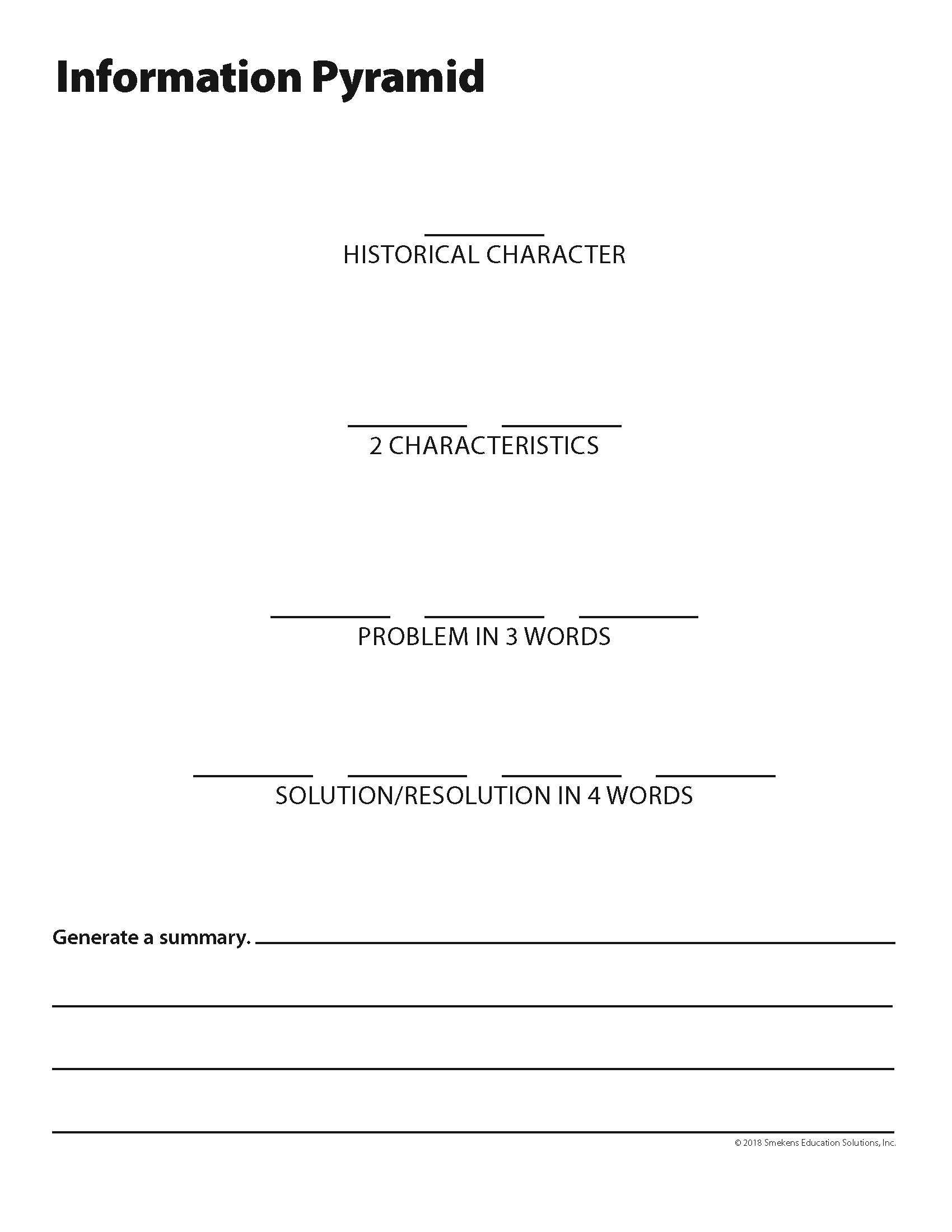
Chronological (History)
Template | Smartboard
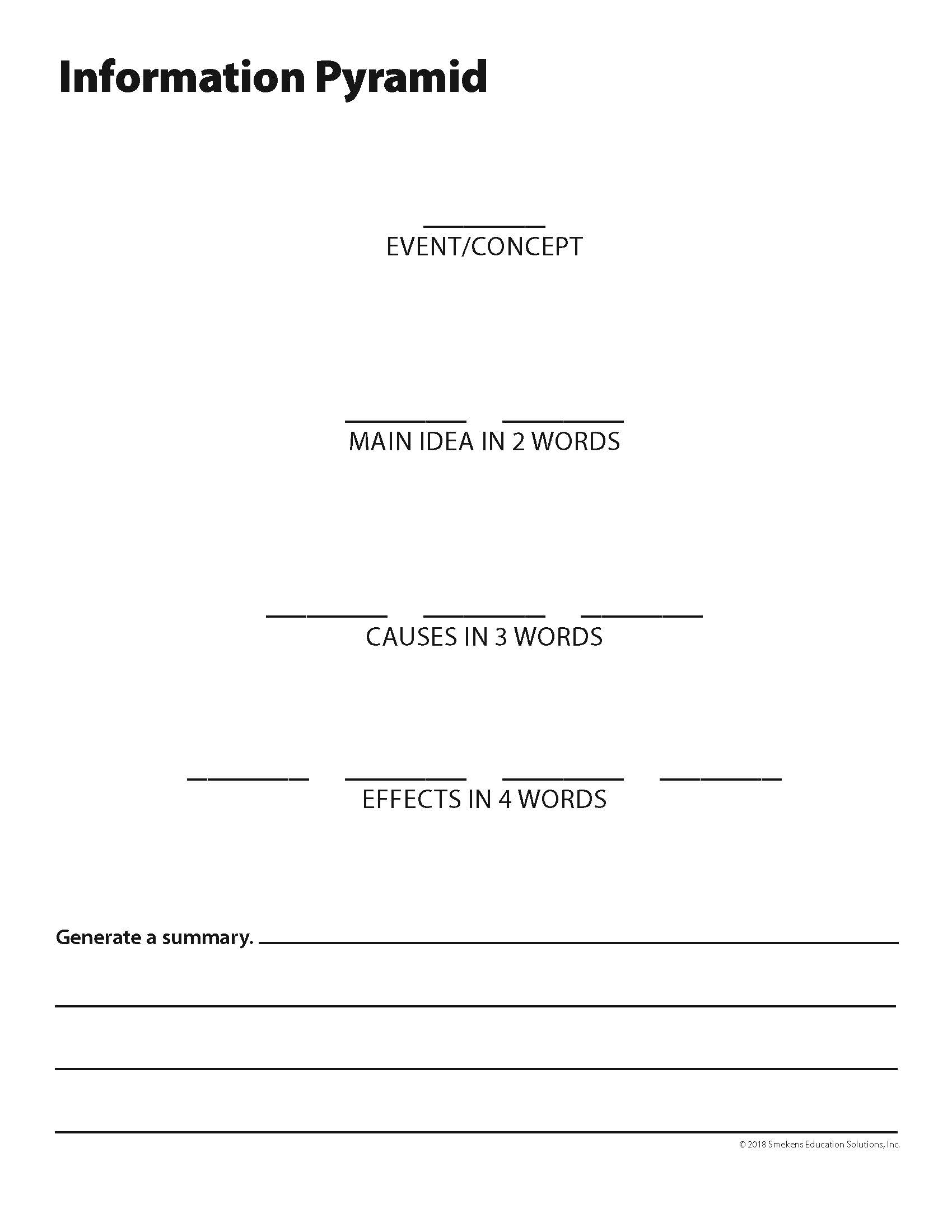
Cause & Effect
Template | Smartboard
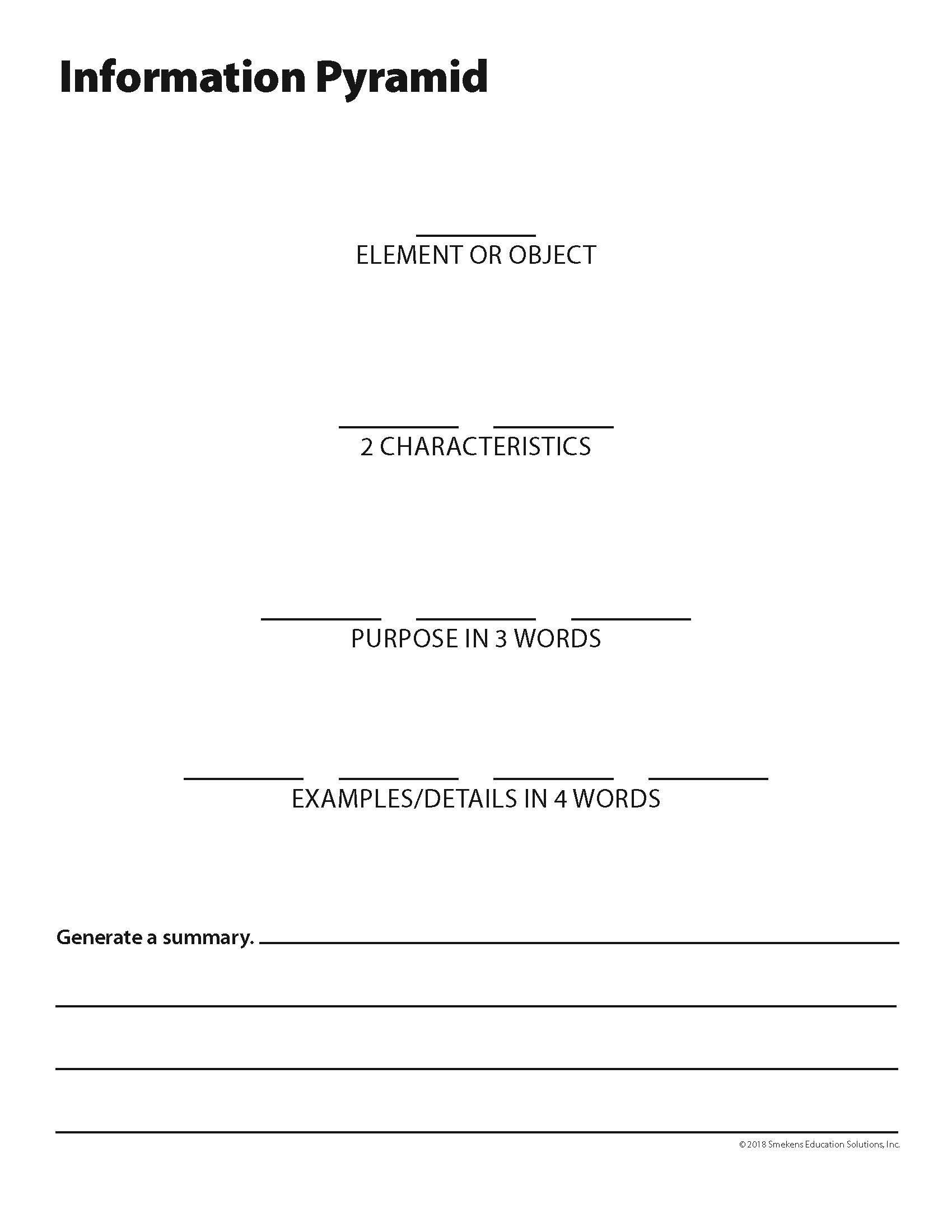
Descriptive (Element/Concept)
Template | Smartboard
Support comprehensive summaries with frames
Students can hone their summarizing skills by completing the Somebody… Wanted… But… So… Then… frame.
Shrink the summary
Once students can generate a summary, then whittle down to the main idea from there. Provide smaller and smaller paper (or decrease their word limit). Challenge them to emphasize the most important and utilize precise word choice to create a single-sentence main-idea statement on a sticky note.


